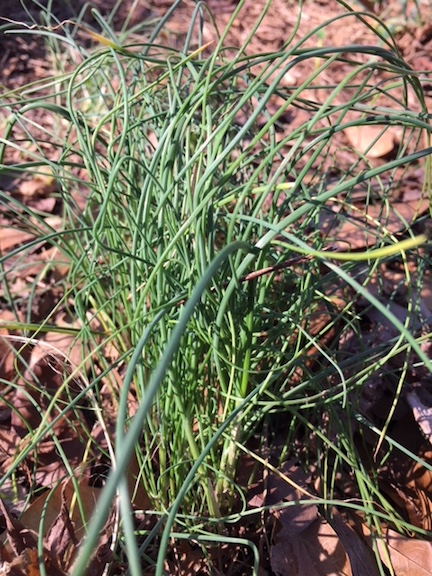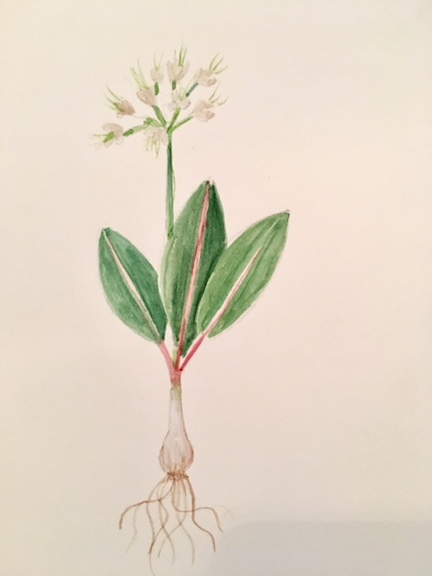Last week when I was waxing poetic about dandelions I spent a good deal of time poking around the garden. I can’t say that it’s exactly exuberant right now but I was surprised at how prolific winter weeds can be!

In addition to mouse – eared chickweed, which seems to be happily growing in huge masses, wild onions are popping up everywhere. Where did they all come from? It seems that no matter how diligent I am in carefully digging up the smelly little bulbs each year, there are always more and more to contend with.
I always think, though, how grateful I would be for these bulbs if I was lost and starving in the wilderness and had nothing else to eat. (Actually, the bulbs are said to be better during the second growing season but I don’t plan to be lost in the wilderness that long.) Though not many animals eat the leaves, because they are so acrid, bears, squirrels, and marmots love to dig for the bulbs.

In the Midwest, there is a wild onion called a “skunk egg,” presumably because it smells so bad. It is harvested and baked into a stew called “SOB stew.”
Maybe the most famous wild onion is Allium tricoccum , wild leek or “ramp” as they’re called in the south, especially in Appalachian regions. Ramps are so popular that they are heavily over – harvested now. Nevertheless, many Appalachian communities still host Ramp Festivals in spring where you can buy delicacies such as ramp jelly or pickled ramps.

Native Americans not only used the leaves of wild onion for flavoring but also crushed them to make a salve used to soothe insect and bee stings (another thing to remember if you’re lost in the wilderness!)
In the Great Lakes region, native peoples considered wild onions to be an important food staple. Their name for it was “checagou,” which many people believe was the origin for the city name, Chicago.
Hopefully none of us will need to survive on wild onions, though isn’t it a comfort to know you could! It’s enough to make you cry. Or maybe it’s just smelling all those onions.
